5 Best laptops for UX designers 2024
Are you a UX designer searching for the ideal laptop that caters to your creative needs? Look no further! We understand the struggles of finding the perfect tool to bring your designs to life. In this blog post, we will walk you through the top laptops specifically curated for UX designers, ensuring a seamless and efficient workflow.
Best laptops for UX designers
| No. | Product Name | Check Price |
| 1. | MacBook Pro | Check Price |
| 2. | Dell XPS 15 | Check Price |
| 3. | Microsoft Surface Book 3 | Check Price |
| 4. | HP Spectre x360 | Check Price |
| 5. | Lenovo ThinkPad X1 Carbon | Check Price |
1. MacBook Pro
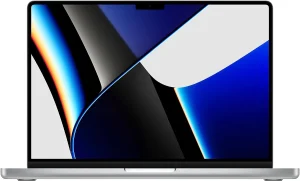
| Specification | Description |
| Processor | Apple M1 Pro or M1 Max chip |
| CPU Performance | Up to 10-core CPU |
| GPU Performance | Up to 32-core GPU |
| Machine Learning Performance | 16-core Neural Engine |
| Battery Life | Up to 17 hours |
| Memory | Up to 64GB unified memory |
| Storage | Up to 8TB superfast SSD storage |
As a UX designer in search of the perfect tool to bring my creative visions to life, I’ve embarked on a quest to find the best laptop that can handle demanding workflows and graphics-intensive tasks. Enter the MacBook Pro, armed with the powerful Apple M1 Pro or M1 Max chip.
The MacBook Pro’s performance is nothing short of exceptional. With up to a 10-core CPU, I experienced a mind-boggling 3.7x faster performance, allowing me to breeze through my projects with unparalleled speed. Whether it’s designing complex wireframes or prototyping interactive interfaces, this laptop handles it all effortlessly.
But it doesn’t stop there. The MacBook Pro boasts up to a 32-core GPU, delivering a staggering 13x faster performance for graphics-intensive apps and games. This means that rendering high-resolution visuals and working with intricate design elements is a seamless experience, allowing me to bring my ideas to life with stunning precision.
One aspect that truly impressed me is the 16-core Neural Engine, offering up to 11x faster machine learning performance. This capability proved invaluable when analyzing user data, making data-driven design decisions, and improving the overall user experience.
Aside from its unparalleled performance, the MacBook Pro also offers exceptional battery life, lasting up to 17 hours on a single charge. This extended battery life enables me to work on-the-go without worrying about running out of power.
In terms of memory and storage, the MacBook Pro doesn’t disappoint. With up to 64GB of unified memory and up to 8TB of superfast SSD storage, I found everything I needed to keep my workflow fast and fluid, with ample space for my design files and applications.
Pros:
- Exceptional CPU and GPU performance
- Impressive machine learning capabilities
- Long-lasting battery life
- Ample memory and storage options
Cons:
- Premium price tag
- Limited customization options
2. Dell XPS 15
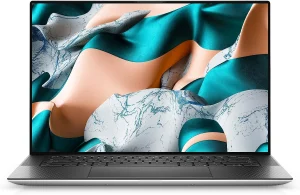
| Specification | Description |
| Touchpad | 62% larger touchpad |
| Display | 16:10 FHD+ edge-to-edge display |
| Display Features | DisplayHDR 400 and Dolby Vision |
| Eyesafe Display Technology | Integrated Eyesafe display technology |
| Audio | Quad speaker design with Waves Nx audio |
| Design | High-polished diamond-cut sidewalls |
When it comes to finding the perfect laptop that combines style, functionality, and power, the Dell XPS 15 stands out from the crowd. As a UX designer, I’ve put this sleek machine to the test, and it has exceeded my expectations in every way.
The Dell XPS 15 boasts a touchpad that is 62% larger than its predecessor, providing ample space for precise navigation and effortless multitasking. This larger touchpad has become an extension of my creative process, allowing me to seamlessly interact with my designs and prototypes.
The 16:10 FHD+ edge-to-edge display is a visual delight. With vibrant colors and sharp details, it brings my design concepts to life with stunning clarity. Equipped with DisplayHDR 400 and Dolby Vision, the XPS 15 ensures that every pixel is optimized for a truly immersive viewing experience.
One standout feature is the integrated Eyesafe display technology, which reduces harmful blue light emissions without compromising color accuracy. This means I can work for extended periods without straining my eyes, ensuring my productivity remains at its peak.
The XPS 15 also excels in audio performance. Its quad-speaker design, enhanced with Waves Nx audio technology, delivers crisp and immersive sound. Whether I’m conducting user testing or reviewing interactive prototypes, the audio quality enhances the overall experience and helps me fine-tune every detail.
Not only is the XPS 15 a powerhouse of performance, but it also exudes elegance with its high-polished diamond-cut sidewalls. It’s a laptop that demands attention and turns heads in any setting, making it a perfect blend of style and substance.
Pros:
- Large touchpad for enhanced navigation
- Stunning edge-to-edge display with excellent color accuracy
- Eyesafe display technology for reduced eye strain
- Immersive audio experience
- Sleek and stylish design
Cons:
- Relatively high price point
- Limited port selection
3. Microsoft Surface Book 3
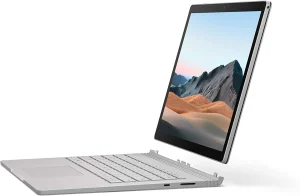
| Specification | Description |
| Processor | Quad-core powered, 10th Gen Intel Core processors |
| Performance | More than 50% faster than Surface Book 2 13.5” |
| Battery Life | Up to 15.5 hours [1] |
| Standby Feature | Improved standby for extended battery life |
| Connectivity | USB-A, USB-C, full-size SD card slot |
| Display | High-resolution PixelSense touchscreen |
As a UX designer, I’ve had the pleasure of putting the Microsoft Surface Book 3 through its paces, and let me tell you, it’s a game-changer. This powerful machine has become my go-to tool for unleashing my creative potential.
With its quad-core powered, 10th Gen Intel Core processors, the Surface Book 3 is the most powerful Surface laptop yet. It effortlessly handles demanding design software and delivers lightning-fast performance that keeps up with my creative workflow. Its seamless multitasking capabilities have allowed me to work on multiple projects simultaneously without any lag or slowdown.
The Surface Book 3 is more than 50% faster than its predecessor, the Surface Book 2 13.5”. This significant improvement in speed and processing power has elevated my productivity to new heights, allowing me to bring my design ideas to life with unprecedented efficiency.
When it comes to battery life, the Surface Book 3 doesn’t disappoint. With up to 15.5 hours of usage on a single charge, I can tackle long design sessions or work on the go without worrying about running out of power. The improved standby feature further extends the battery life when I’m away, ensuring that I can pick up right where I left off without any interruptions.
Connectivity is key for UX designers, and the Surface Book 3 offers the connections I need. With USB-A, USB-C, and a full-size SD card slot, I can easily connect my peripherals, transfer files, and expand my storage options without any hassle.
The high-resolution PixelSense touchscreen display is a visual treat. It brings my designs to life with stunning clarity and vibrant colors. Whether I’m sketching wireframes or fine-tuning UI elements, the Surface Book 3’s display provides an immersive and precise touch experience.
Pros:
- Powerful performance for demanding design tasks
- Lightning-fast speed and multitasking capabilities
- Long battery life with improved standby feature
- Versatile connectivity options
- High-resolution touchscreen display
Cons:
- Relatively high price point
- Limited availability of certain software applications
4. HP Spectre x360
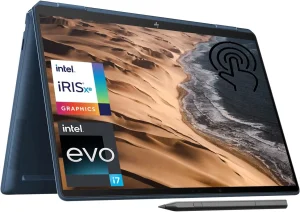
| Specification | Description |
| RAM | 16GB high-bandwidth RAM |
| Storage | 512GB PCIe NVME M.2 Solid State Drive |
| Processor | Intel Evo platform 12th Generation Core i7-12700H (8 Efficient-cores, 6 Performance-cores, 20 Threads, 24MB Intel Smart Cache, Base Frequency at 1.7GHz, Up to 4.7GHz at Max Turbo Frequency) with Intel Iris Xe Graphics |
| Display | 16-inch diagonal, 3K+ (3072 x 1920), multitouch-enabled, IPS, edge-to-edge glass, micro-edge, antireflection Corning Gorilla Glass NBT, Low Blue Light |
| Connectivity | 2 x Thunderbolt 4 with USB4 Type-C, 1 x SuperSpeed USB Type-A, 1 x HDMI 2.1, 1 x Headphone/Microphone combo, 1 x AC Smart Pin, 1 x MicroSD Media Card Reader; Wi-Fi 6E + Bluetooth |
| Additional Features | Backlit Keyboard(F4), Fingerprint Reader, HP Rechargeable MPP 2.0 Tilt Pen |
As a UX designer, I’m always on the lookout for the perfect laptop that combines power, versatility, and style. And let me tell you, the HP Spectre x360 is a true gem that checks all the boxes.
This laptop is a powerhouse, thanks to its 16GB high-bandwidth RAM. It effortlessly handles multiple design applications and browser tabs, allowing me to work seamlessly without any lag or slowdown. The 512GB PCIe NVME M.2 Solid State Drive ensures lightning-fast bootup and data transfer, making my workflow smooth and efficient.
Equipped with the Intel Evo platform 12th Generation Core i7 processor and Intel Iris Xe Graphics, the Spectre x360 delivers exceptional performance and stunning visuals. The 16-inch diagonal, 3K+ multitouch-enabled display is a visual treat. With its edge-to-edge glass and antireflection Corning Gorilla Glass NBT, I can immerse myself in my designs with clarity and precision. The Low Blue Light feature also ensures reduced eye strain during long design sessions.
Connectivity is a breeze with the Thunderbolt 4 with USB4 Type-C ports, SuperSpeed USB Type-A port, HDMI 2.1, and MicroSD Media Card Reader. Whether I need to transfer files, connect external displays, or expand my storage, the Spectre x360 has me covered. The Wi-Fi 6E and Bluetooth capabilities keep me connected and allow for seamless collaboration with team members.
The backlit keyboard and fingerprint reader add convenience and security to my work environment. The included HP Rechargeable MPP 2.0 Tilt Pen is a game-changer for precise and intuitive sketching and note-taking.
Pros:
- Powerful performance for multitasking
- Fast bootup and data transfer
- Stunning 3K+ multitouch-enabled display
- Versatile connectivity options
- Backlit keyboard and fingerprint reader
- Included HP Rechargeable MPP 2.0 Tilt Pen
Cons:
- Relatively high price point
- Limited availability of certain software applications
5. Lenovo ThinkPad X1 Carbon
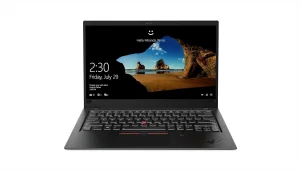
| Specifications | Details |
| Brand | Lenovo |
| Model | 20KH002JUS |
| Product Type | Ultrabook |
| Processor Manufacturer | Intel |
| Processor Type | Core i7 |
| Processor Generation | 8th Gen |
| Processor Model | i7-8650U |
| Processor Speed | 1.90 GHz |
As a UX designer, finding the perfect laptop that combines power, portability, and a great user experience is essential. Look no further than the Lenovo ThinkPad X1 Carbon. This ultrabook from Lenovo is a true gem that ticks all the boxes for the best laptops for UX designers.
With its 8th generation Intel Core i7 processor and 16 GB of LPDDR3 memory, the ThinkPad X1 Carbon delivers lightning-fast performance, making multitasking a breeze. The 512 GB solid-state drive ensures that you have ample space to store your design files and projects without any lag.
The 14″ LCD with in-plane switching (IPS) technology provides stunning visuals and wide viewing angles, allowing you to see every detail of your designs with clarity. The touchscreen feature adds an extra layer of convenience, making it easy to interact with your designs directly.
One of the standout features of the ThinkPad X1 Carbon is its lightweight and slim design. Weighing just under 3 pounds, this laptop is incredibly portable, perfect for UX designers on the go. The durable carbon fiber construction ensures that it can withstand the rigors of daily use without sacrificing style.
In terms of connectivity, the ThinkPad X1 Carbon offers a wide range of options. With four USB ports (including two USB 3.0 ports and two USB Type-C ports), an Ethernet port, HDMI, and a network (RJ-45) port, you can easily connect to external devices, monitors, and networks without any hassle.
To top it all off, the ThinkPad X1 Carbon comes with Windows 10 Pro, providing a familiar and intuitive operating system for all your design needs.
Pros:
- Powerful 8th generation Intel Core i7 processor
- Lightweight and portable design
- Stunning LCD with touchscreen
- Ample storage space with a 512 GB solid-state drive
- Versatile connectivity options
Cons:
- Limited graphics memory accessibility
- LPDDR3 memory technology may not be as fast as DDR4
Buying Guide: 6 Factors to Consider When Choosing the Best Laptops for UX Designers
Are you a UX designer searching for the perfect laptop that will help you bring your creative ideas to life? Look no further! In this buying guide, we will walk you through the six crucial factors to consider when choosing the best laptop for UX design. By the end of this guide, you’ll be equipped with the knowledge to make an informed decision and find the laptop that suits your needs perfectly.
1. Performance Matters
When it comes to UX design, a laptop with sufficient performance capabilities is a must. Look for a laptop with a powerful processor, at least an Intel Core i7 or AMD Ryzen 7, to ensure smooth multitasking and seamless performance. Additionally, choose a laptop with a minimum of 16GB RAM to handle resource-intensive design applications.
2. Display Quality and Size
The display is one of the most important aspects for UX designers. Look for a laptop with a high-resolution display, preferably a minimum of Full HD (1920 x 1080) resolution. A larger screen size, around 15-17 inches, provides ample workspace for design tasks. Consider an IPS panel for accurate color reproduction and wide viewing angles, essential for reviewing designs.
3. Graphics Capabilities
As a UX designer, you’ll often work with graphics-intensive software. Ensure your laptop has a dedicated graphics card, such as an NVIDIA GeForce GTX or RTX series, to handle graphic design tasks efficiently. A dedicated GPU will enhance your laptop’s performance and allow for smoother rendering of complex designs.
4. Storage and Speed
Storage is crucial for storing large design files and applications. Opt for a laptop with a solid-state drive (SSD) instead of a traditional hard drive for faster data access and overall system responsiveness. Aim for a minimum of 512GB SSD storage, but consider larger capacities if you work with extensive design files or require ample space for future projects.
5. Portability and Battery Life
As a UX designer, you might find yourself working on the go or collaborating with clients outside of your workspace. Choose a laptop that strikes a balance between performance and portability. Look for a lightweight laptop with a long-lasting battery to ensure that you can work comfortably even when you’re away from a power source.
6. Connectivity and Additional Features
Consider the connectivity options available on the laptop. Ensure it has sufficient USB ports, including USB-C, to connect various peripherals and devices.
Additionally, check for an HDMI port if you need to connect your laptop to external displays for client presentations. Other features to consider include a backlit keyboard for working in low-light environments and a reliable webcam for remote collaborations.
FAQs
1. Do I need a laptop with a touchscreen for UX design?
While a touchscreen can be convenient for some UX design tasks, it is not a requirement. Many UX designers prefer using a mouse or trackpad for precision and accuracy.
2. What is the ideal amount of storage for a laptop used by UX designers?
UX designers often work with large design files, so it is recommended to have a minimum of 512GB of storage. However, consider higher capacities if you work on extensive projects or require ample space for future designs.
3. Are MacBooks the only suitable laptops for UX design?
While MacBooks are popular among UX designers for their reliable performance and seamless integration with design software, there are many Windows laptops available that offer comparable performance and features.
4. Should I prioritize a laptop with a high refresh rate display for UX design?
A high refresh rate display is not a necessity for UX design. It is more important to focus on factors such as color accuracy, resolution, and viewing angles, as these aspects impact the quality of your designs.
5. Can I rely on integrated graphics for UX design tasks?
Integrated graphics can handle basic design tasks, but for optimal performance, it is recommended to choose a laptop with a dedicated graphics card.
Conclusion
Finding the best laptop for UX designers requires careful consideration of several key factors. It’s essential to prioritize performance, ensuring your laptop has a powerful processor and ample RAM to handle resource-intensive design applications.
A high-resolution display, graphics capabilities, and sufficient storage are also crucial for a smooth and efficient UX design workflow. Portability, battery life, and additional features like connectivity options should not be overlooked either. Remember, the perfect laptop for UX design will ultimately depend on your specific needs and budget.